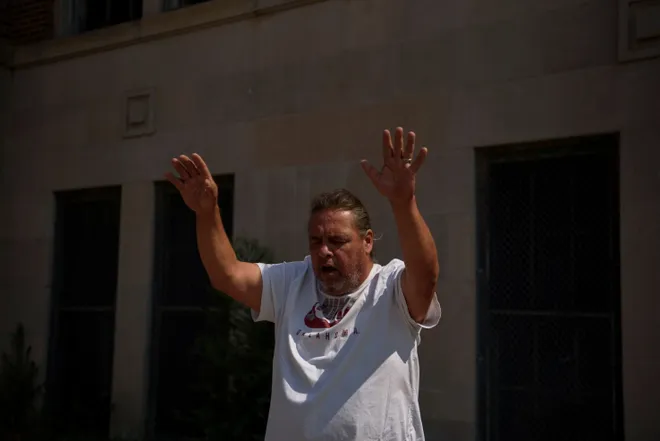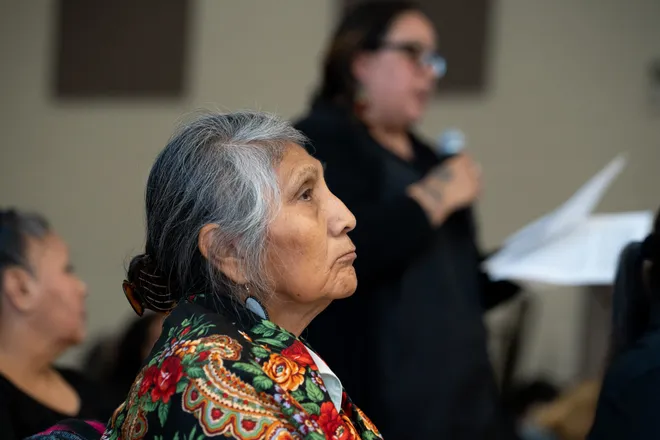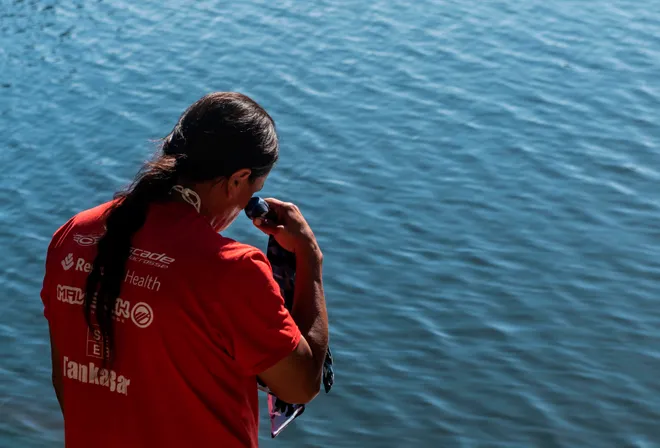'Crying for their parents': More than 900 children died at Indian boarding schools, U.S. report finds
A federal investigation has confirmed that more than 900 American Indian, Alaska Native and Native Hawaiian children perished in U.S. government boarding schools from 1819 to 1969, acknowledging that the actual toll is undoubtedly higher and recommending an official apology.
“Based on available records, the Department concludes that at least 973 documented Indian child deaths occurred in the Federal Indian boarding school system,” the report commissioned by U.S. Interior Secretary Deb Haaland said.
More than 18,000 children, some as young as 4, were shipped off to federal boarding schools throughout the 19th and 20th centuries, with entire generations suffering a tragic legacy of trauma, abuse, neglect, poor nutrition and despair.
Chase Iron Eyes, executive director of the Sacred Defense Fund, an initiative to compensate tribal nations displaced from lands that are now national parks and monuments, said he applauded the United States “for taking on the challenge of remediating and correcting its actions and practices that are still designed to bring about the extinction of native nationhood.”
“We must tell the truth before we can reconcile,” the longtime Indigenous rights activist said. “Those who've suffered the horrors must be made whole.”

The boarding school system came about as part of forced assimilation policies pursued or allowed by the U.S. for nearly two centuries and targeting American Indian, Alaska Native and Native Hawaiian people, the report noted.
Locations of the schools can be pinpointed on a map compiled by the National Native American Boarding School Healing Coalition as part of a newly launched digital archive of materials chronicling the boarding schools era.
The schools’ purpose was to erase children’s Indigenous identities while preparing them for menial jobs in American society. The most influential and well-known of them was Carlisle Indian Industrial School, a military-style institution launched in 1879 that inspired subsequent schools with the motto declared by its founder, Brig. Gen. Robert Henry Pratt: “Kill the Indian in him, save the man.”
Authors of the newly released federal report called on the U.S. government to acknowledge its role and the resulting harms, to apologize to impacted individuals, families and tribes and to adopt cultural revitalization policies supporting efforts such as language revitalization, traditional food systems and cultural and religious practices, among others.
Personal accounts stand out in latest report
The report, released Tuesday, is built on one issued in May 2022 that included the first official list of the 417 federally run Indian boarding schools across the United States. It documented the conditions experienced by children there. About half the schools were operated by religious organizations, the report said.
It was the personal accounts that stood out in Tuesday’s report. One former student recalled that after the kids had all been taken from their homes, “the village was so quiet because there was no children. No children in the village.”
Another former student recalled the despair evident throughout the night, “listening to all the other children crying themselves to sleep, crying for their parents and just wanting to go home.”

Haaland launched the Federal Indian Boarding School Initiative in 2021 to investigate and document the “troubled legacy” of how the federal schools and an additional 1,025 religious and privately operated schools worked to assimilate Indian children by removing them from their homes to sometimes remote military-style schools where they were systemically deprived of language, culture and family life.
“We’re here because our ancestors persisted,” Haaland said during a call with reporters Tuesday. “It’s our duty to share those stories with the world.”
The report noted that the tally does not account for all children, including those who attended Indian boarding schools beyond the 150-year period or who were sent to boarding schools run by religious institutions and organizations that did not receive federal government support.
“The Department acknowledges that the actual number of children who died while in Indian boarding schools is greater,” the report said.
More than apology needed, report says
Students, their families and entire communities have endured disruption from the boarding school system for nearly 200 years, the report said. Tribes deal with domestic violence, substance abuse and adverse childhood experiences that often result in reduced cognitive abilities through adulthood, along with other social ills.

Newland, the Assistant Interior Secretary, recommended multiple measures for the federal government to pursue in addition to a formal acknowledgement and apology.
Those included addressing the present-day impacts of the boarding school system, establishment of a national memorial acknowledging the experiences of those affected by its harms, identification and repatriation of remains of children who never returned home from boarding schools and the return of former federal boarding school sites to tribes.
“Truth and reconciliation are not beyond our reach,” Iron Eyes said. “The United States must assist in providing paths to recovery.”
Disclaimer: The copyright of this article belongs to the original author. Reposting this article is solely for the purpose of information dissemination and does not constitute any investment advice. If there is any infringement, please contact us immediately. We will make corrections or deletions as necessary. Thank you.






